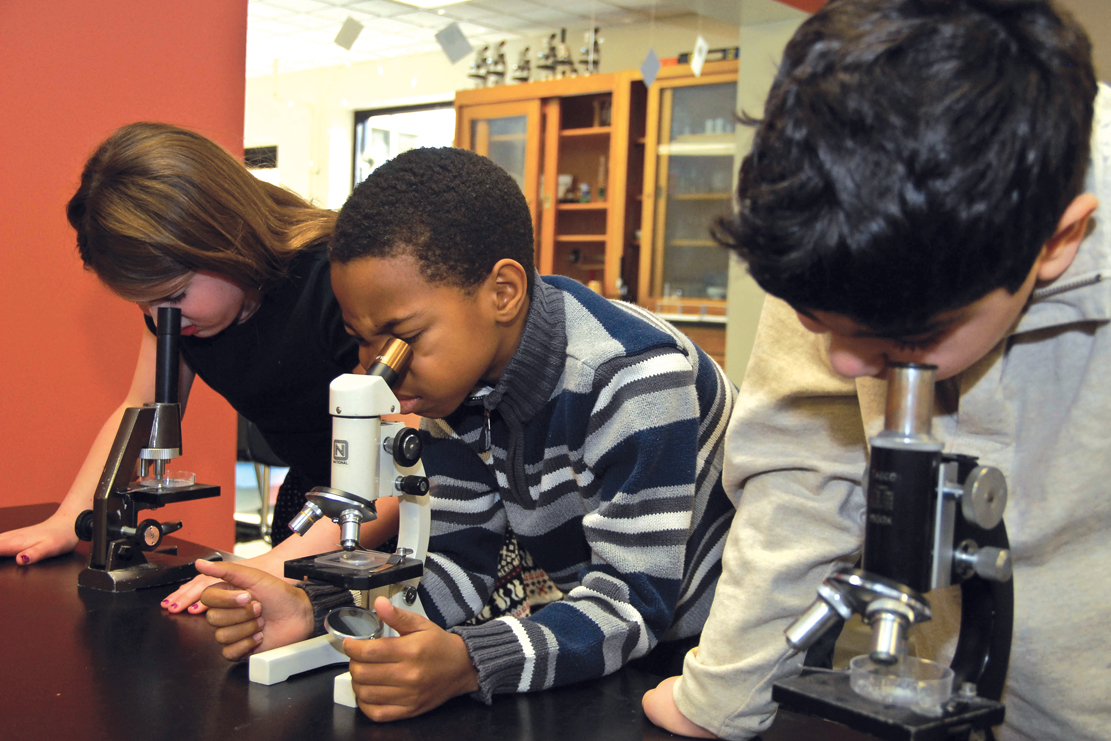The subject of science is crucial in elementary school to help students learn how to understand problem solving skills that will help them in all subjects of their academic and personal lives. The National Science Teachers Association says that students learn science best when other subject areas are integrated into it, such as technology, and when they are involved in first-hand, hands on investigation and exploration. Using technology will help foster these needs, providing experiences for meeting the curricular content with technological hands-on activities (National Science Teachers Association, 2002).
Full Option Science System (FOSS), was adopted in 2002 by one of the largest school districts in New York State. FOSS is a science program that coincides with state standards, while allowing teachers to integrate technology into science instruction. The program equips the schools with several computers in each room, cordless microscopes, flex cam cameras, and a special station for teachers (Lyon & Buckshaw, 2011).
With the new equipment and support from the FOSS program, teachers in this district found creative and effective ways to integrate technology into their science lessons. When observing insects, students used flex cameras to get an up close look at the critters. The flex cam allowed the students to project the bugs onto a large monitor, and it made their insects come to life with great detail. This allowed the students to compare and contrast the different types of bugs, and made it possible to analyze progression in the creatures' life cycles (Lyon & Buckshaw, 2011).
The results of this new emphasis on technology in science showed increases in student achievement in the areas of science as well as reading. In the 2004-2005 school year, 96% of the school district's students met or exceeded the state standard on the NY state science test for 4th grade, which was a 13% increase, thought to be linked to the science/technology integration program (Lyon & Buckshaw, 2011).
Vernier products provide software and curriculum that engage students in science through hands-on exploration. The company, being made up mainly of former teachers, understands the needs of educators and students, and has science technology appropriate for every grade level (Vernier, 2011).
There are multiple interactive activities that correlate with the Go!Temp temperature probe and allow students to interacte first hand with both science and technology. The probe is easy to use and enables them to explore the concept of temperature without a lot of assistance from the teacher, creating independence and an increase in science and technology knowledge. Not only is it fun to use all of the probes, but each experiment correlates to state standards from every state and every grade (Vernier, 2011).
In my classroom, I will use Vernier probes for temperature labs and activities. They are very easy to use and can be adapted to fit the curriculum and needs of every student and grade level. I will also use things like electronic polls to gather data about student knowledge. For example, in my fourth grade class, when we are learning about energy transfer, I will use the polls as a pre-assessment for a lab. I will provide four choices, and ask the students which substance, when added to water, do they hypothesize will make the water become the coldest. They would use their clickers or cell phones to vote for the answer they predict to be correct and at the end of the lab, after they have tested the four substances, we would return to our polled data and talk about how valid our hypotheses were.
No matter the age, from kindergarten to college, students enjoy learning and retain information much more when they are personally engaged in the content. Labs and hands-on activities help students understand first hand the subjects that they are learning. In this age of technology, there are so many opportunities to expand learning far beyond the paper and pen, and the use of technology can help immensely with accuracy and creativity of experiments.
It is important for students to become accustomed to using technology, both familiar and unfamiliar pieces, because it is only going to become a larger part of their lives as they get older. Integrating multiple subjects, in this case science and technology, allows students to multi-task in learning, and develop simultaneously in multiple subjects. Using technology in science promotes student interactions, excitement, and engagement. Science lesson and labs become much more memorable when students use hands on technology.
References
Lyon, A., & Buckshaw, L. (2011, August 23). Education world. Retrieved from http://www.educationworld.com/a_tech/tech/tech233.shtml
National Science Teachers Association. (2002, July).National science teachers association. Retrieved from http://www.nsta.org/about/positions/elementary.aspx
Tarwater, Dave. (2009, November 6). Vernier Temperature Probe Lab Take 1. Retrieved March 13, 2013. from http://www.youtube.com/watch?v=ohn6N1W67y0
Vernier. (2011). Retrieved from http://www.vernier.com/company/about-us/



No comments:
Post a Comment